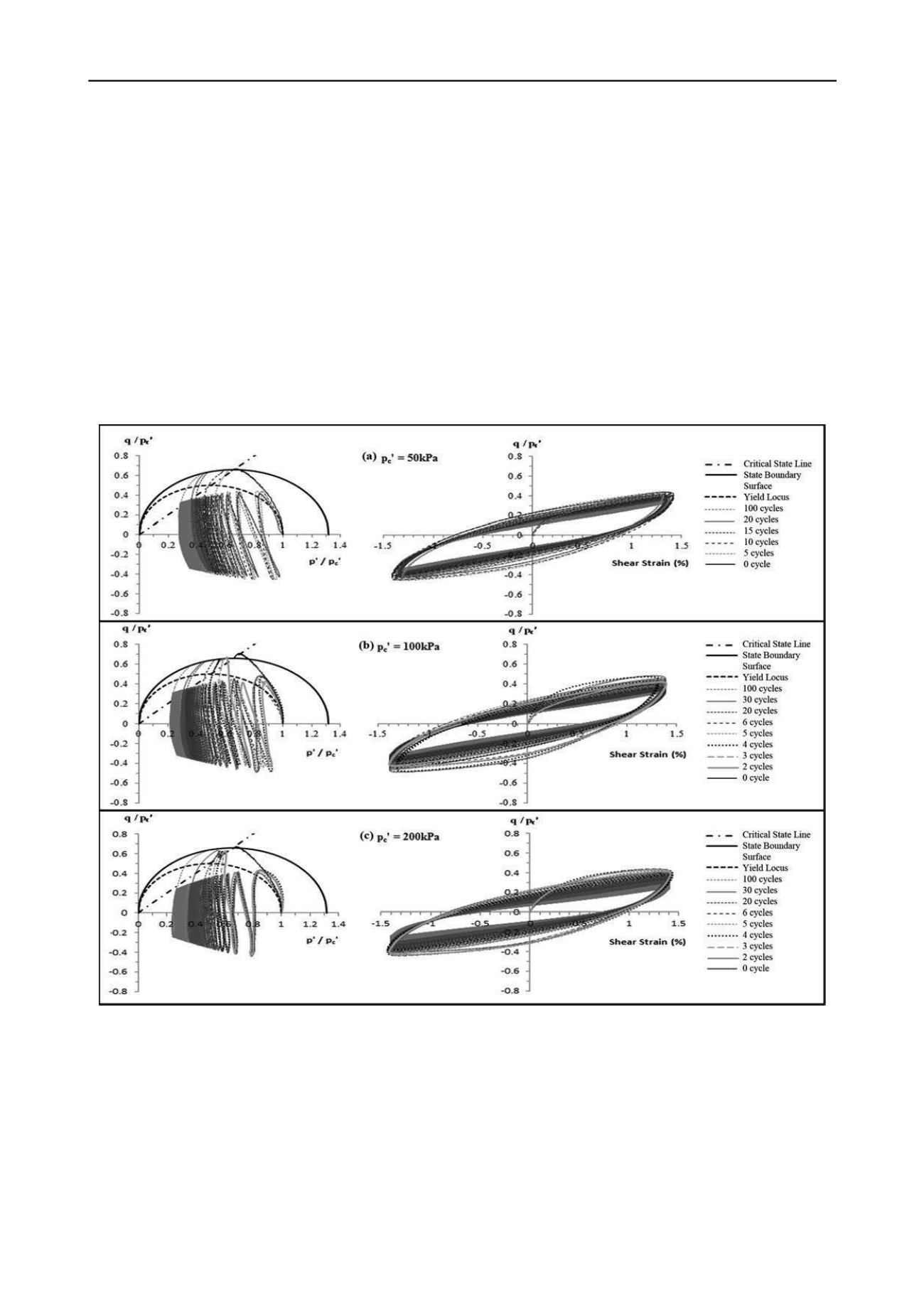
2353
Technical Committee 209 /
Comité technique 209
increase in number of load cycles and reduction in applied
cyclic strain amplitude. This implies that the form of the
effective stress paths of Singapore Upper Marine Clay under
post-cyclic monotonic loading is dependent primarily on the
mean effective stress state at the end of the cyclic loading phase.
4 CONCLUSIONS
The effective stress paths of Singapore Upper Marine Clay
under post-cyclic monotonic loading takes on three different
forms depending on the mean effective stress state of the
specimen at the end of the cyclic loading phase. Although it is
commonly accepted that the undrained post-cyclic effective
stress path of a normally consolidated clay is similar to the
effective stress path of an overconsolidated clay (Matsui and
Abe 1981, Hyde and Ward 1985, Yasuhara et al. 1992), this
study shows that this condition holds only when the normalized
mean effective stress state of the clay specimen at the start of
post-cyclic monotonic loading falls below 0.5. When the
normalized mean effective stress state of the clay specimen at
the start of post-cyclic monotonic loading is greater than 0.6, the
effective stress path of the specimen still follows that of lightly
over-consolidated and normally consolidated clays. Within each
of these normalized mean effective stress regimes, the post-
cyclic clay behavior is governed by the normalized mean
effective stress after cyclic loading and independent of the
effective consolidation pressure, the cyclic strain amplitude and
number of cycles applied during cyclic loading.
Furthermore, stress reversal points observed during cyclic
loading phase becomes evident when mean effective stress state
of the clay specimen at the start of post-cyclic monotonic
loading falls below 0.5. Thus, the occurrence of stress reversal
during cyclic loading is indicative of dilative behavior and post-
cyclic monotonic loading in this regime exhibits effective stress
path of an overconsolidated clay.
Figure 1. Effective Stress Paths and Stress-Strain Relationships for (a) p
c
’ = 50kPa, (b) p
c
’ = 100kPa, and (c) p
c
’ = 200kPa.
p’ / p
c
’ increases


